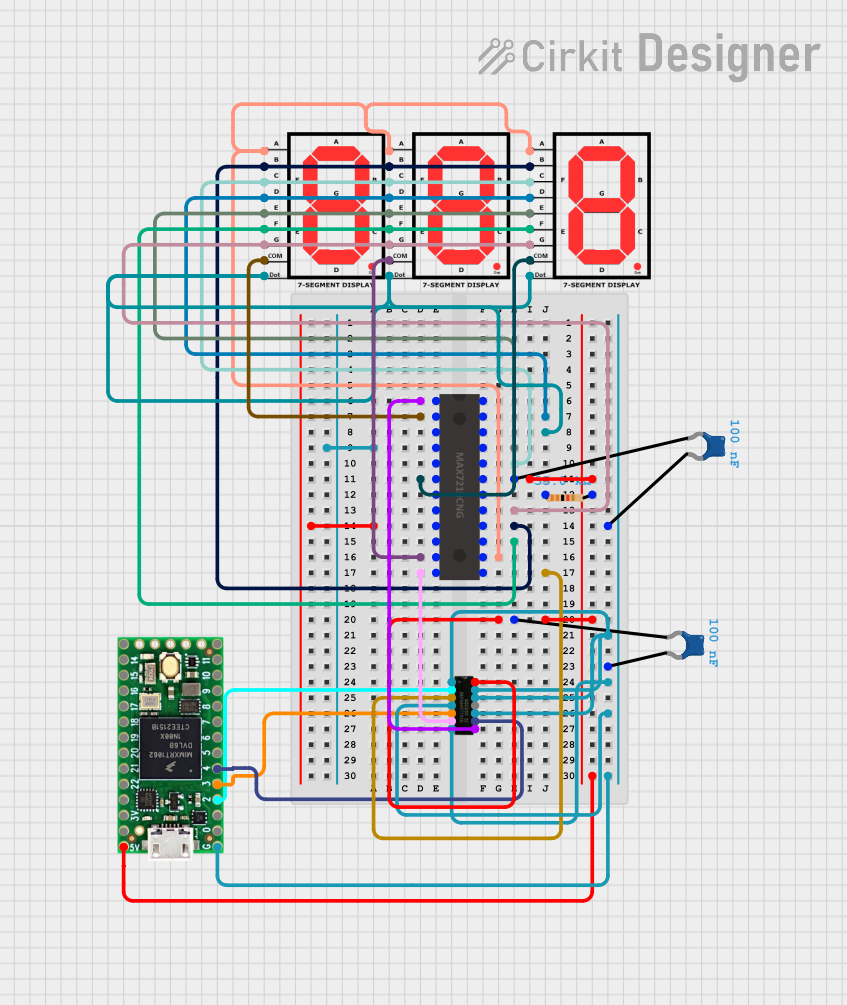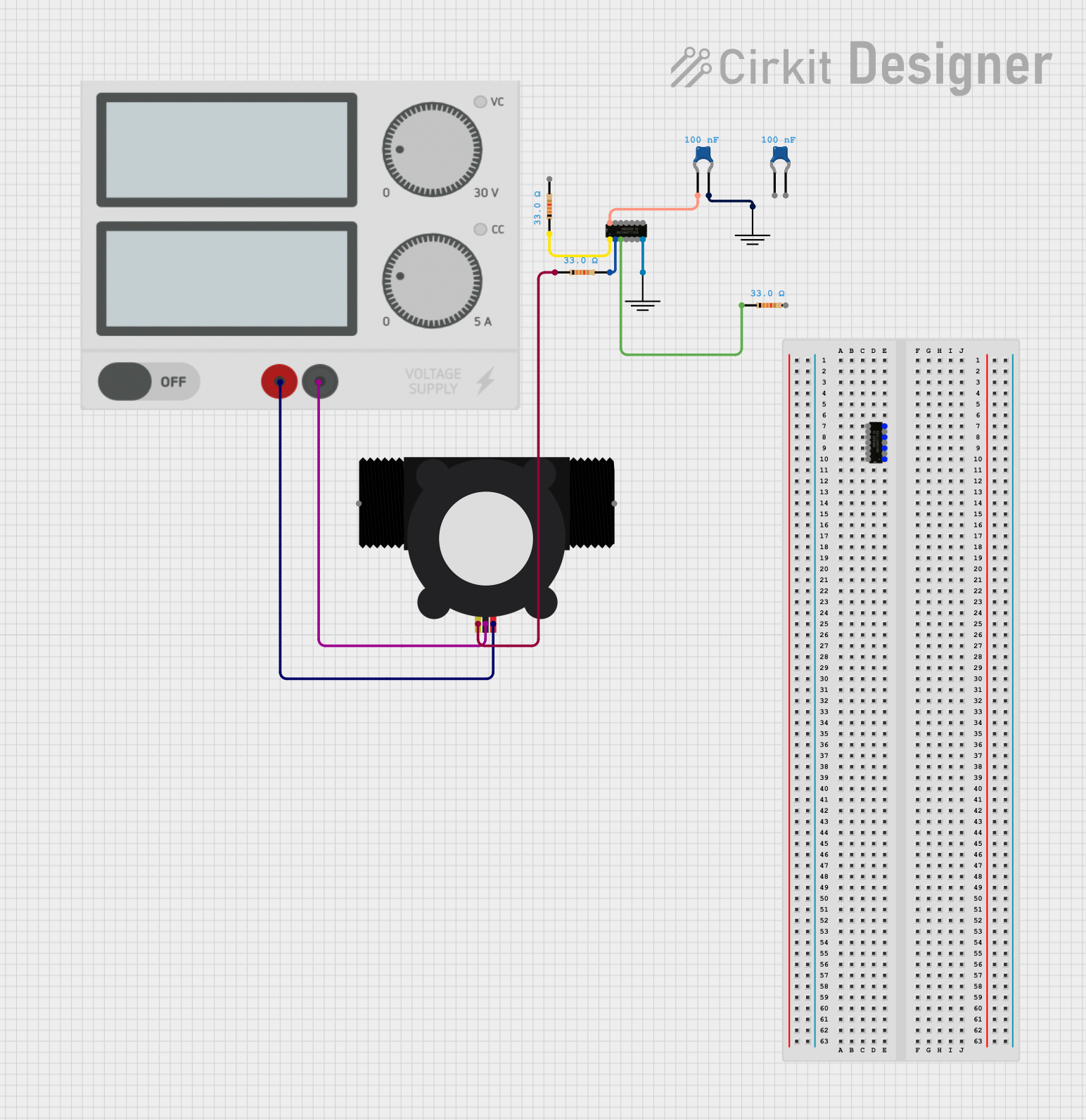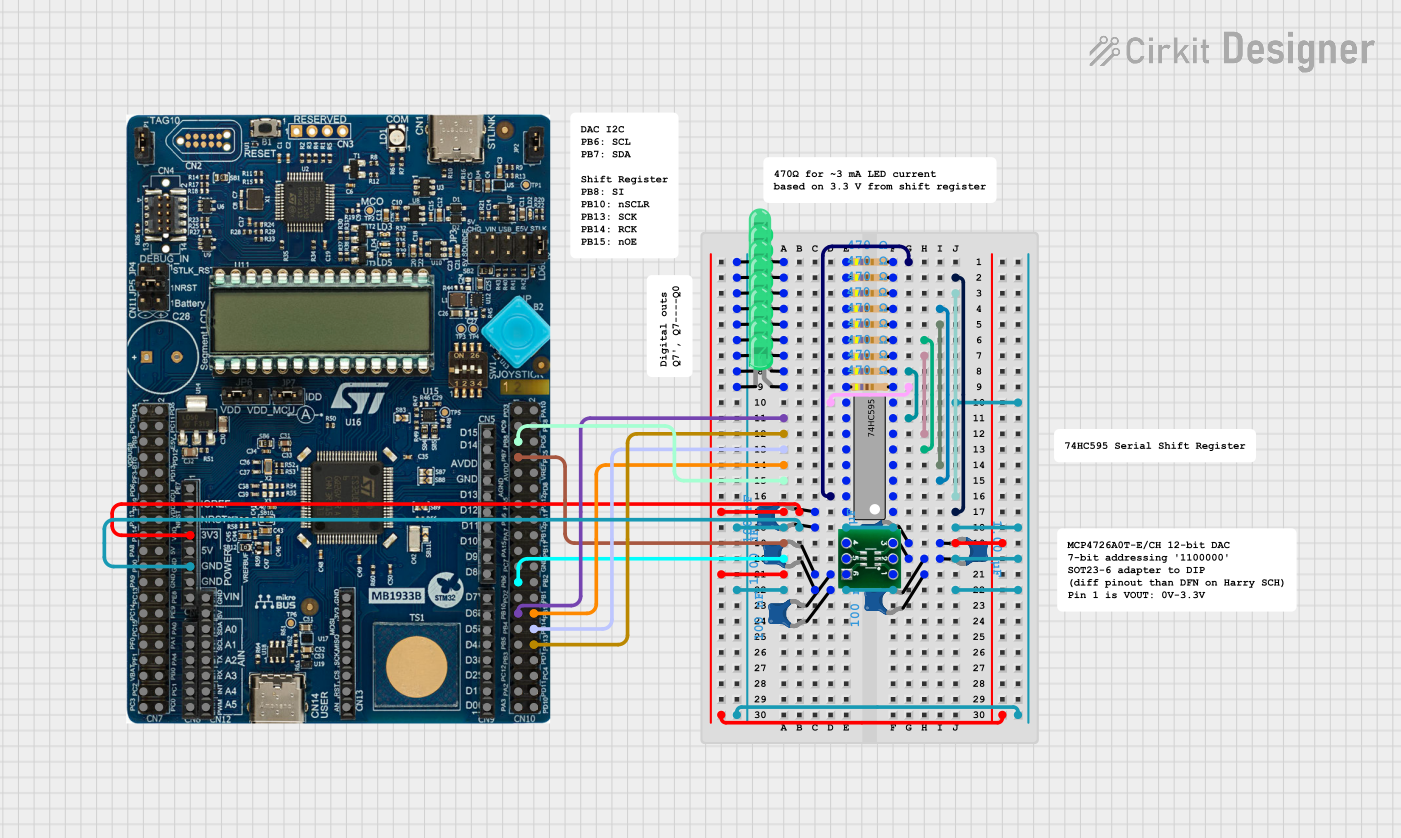
How to Use SN74AHCT125N : Examples, Pinouts, and Specs

 Design with SN74AHCT125N in Cirkit Designer
Design with SN74AHCT125N in Cirkit DesignerIntroduction
The SN74AHCT125N is a quad buffer/driver with 3-state outputs, manufactured by Texas Instruments. It is designed for high-speed operation and low power consumption, making it ideal for use in digital circuits. Each of the four independent buffers features a 3-state output, which can be controlled via an enable pin. This component is commonly used for signal buffering, level shifting, and driving high-capacitance loads in digital systems.
Explore Projects Built with SN74AHCT125N

 Open Project in Cirkit Designer
Open Project in Cirkit Designer
 Open Project in Cirkit Designer
Open Project in Cirkit Designer
 Open Project in Cirkit Designer
Open Project in Cirkit Designer
 Open Project in Cirkit Designer
Open Project in Cirkit DesignerExplore Projects Built with SN74AHCT125N

 Open Project in Cirkit Designer
Open Project in Cirkit Designer
 Open Project in Cirkit Designer
Open Project in Cirkit Designer
 Open Project in Cirkit Designer
Open Project in Cirkit Designer
 Open Project in Cirkit Designer
Open Project in Cirkit DesignerCommon Applications
- Signal buffering in digital circuits
- Level shifting between different voltage domains
- Driving high-capacitance loads
- Bus interface and control in microcontroller-based systems
- Data communication and signal isolation
Technical Specifications
Key Technical Details
- Manufacturer Part ID: SN74AHCT125N
- Operating Voltage Range: 4.5 V to 5.5 V
- Input Voltage Range: 0 V to 5.5 V
- Output Voltage Range: 0 V to Vcc
- High-Level Input Voltage (VIH): 2.0 V (minimum)
- Low-Level Input Voltage (VIL): 0.8 V (maximum)
- Output Current (IO): ±25 mA (maximum per output)
- Quiescent Current (ICC): 8 µA (maximum)
- Propagation Delay: 6 ns (typical at 5 V)
- Operating Temperature Range: -40°C to 125°C
- Package Type: 14-pin PDIP (Plastic Dual In-line Package)
Pin Configuration and Descriptions
The SN74AHCT125N is a 14-pin IC with the following pinout:
| Pin Number | Pin Name | Description |
|---|---|---|
| 1 | 1OE | Output Enable for Buffer 1 (Active LOW) |
| 2 | 1A | Input for Buffer 1 |
| 3 | 1Y | Output for Buffer 1 |
| 4 | 2OE | Output Enable for Buffer 2 (Active LOW) |
| 5 | 2A | Input for Buffer 2 |
| 6 | 2Y | Output for Buffer 2 |
| 7 | GND | Ground |
| 8 | 3Y | Output for Buffer 3 |
| 9 | 3A | Input for Buffer 3 |
| 10 | 3OE | Output Enable for Buffer 3 (Active LOW) |
| 11 | 4Y | Output for Buffer 4 |
| 12 | 4A | Input for Buffer 4 |
| 13 | 4OE | Output Enable for Buffer 4 (Active LOW) |
| 14 | VCC | Power Supply (4.5 V to 5.5 V) |
Usage Instructions
How to Use the SN74AHCT125N in a Circuit
- Power Supply: Connect the VCC pin (Pin 14) to a 5 V power supply and the GND pin (Pin 7) to ground.
- Input Signals: Apply the input signals to the
Apins (Pins 2, 5, 9, and 12) of the respective buffers. - Output Enable Control: Use the
OEpins (Pins 1, 4, 10, and 13) to control the 3-state outputs:- Drive the
OEpin LOW to enable the corresponding output. - Drive the
OEpin HIGH to place the output in a high-impedance (Hi-Z) state.
- Drive the
- Output Signals: The buffered output signals will appear on the
Ypins (Pins 3, 6, 8, and 11) when the correspondingOEpin is LOW.
Important Considerations and Best Practices
- Ensure that the input voltage levels are within the specified range (0 V to 5.5 V).
- Avoid exceeding the maximum output current of ±25 mA per output to prevent damage to the IC.
- Use decoupling capacitors (e.g., 0.1 µF) near the VCC pin to stabilize the power supply and reduce noise.
- When using the 3-state outputs, ensure that no two outputs are connected directly to avoid bus contention.
Example: Connecting the SN74AHCT125N to an Arduino UNO
The following example demonstrates how to use the SN74AHCT125N to buffer a digital signal from an Arduino UNO.
Circuit Connections
- Connect the VCC pin (Pin 14) to the Arduino's 5 V pin and the GND pin (Pin 7) to the Arduino's GND.
- Connect an Arduino digital output pin (e.g., Pin 8) to the
1Apin (Pin 2) of the SN74AHCT125N. - Connect the
1OEpin (Pin 1) to GND to enable the output. - Connect the
1Ypin (Pin 3) to the desired load or circuit.
Arduino Code
// Example code to demonstrate the use of SN74AHCT125N with Arduino UNO
void setup() {
pinMode(8, OUTPUT); // Set Pin 8 as an output to drive the SN74AHCT125N
}
void loop() {
digitalWrite(8, HIGH); // Send a HIGH signal to the buffer input
delay(1000); // Wait for 1 second
digitalWrite(8, LOW); // Send a LOW signal to the buffer input
delay(1000); // Wait for 1 second
}
Troubleshooting and FAQs
Common Issues and Solutions
No Output Signal:
- Ensure that the
OEpin for the corresponding buffer is connected to GND (LOW). - Verify that the input signal is within the specified voltage range.
- Ensure that the
Output Signal is Distorted:
- Check for excessive load capacitance on the output pin. If necessary, reduce the load or use a series resistor.
- Ensure proper decoupling of the power supply using capacitors near the VCC pin.
High Current Consumption:
- Verify that no two outputs are shorted together or connected to conflicting signals.
- Check for any floating input pins and connect them to a defined logic level (HIGH or LOW).
Component Overheating:
- Ensure that the output current does not exceed the maximum rating of ±25 mA per output.
- Verify that the power supply voltage is within the specified range (4.5 V to 5.5 V).
FAQs
Q1: Can the SN74AHCT125N be used for level shifting?
A1: Yes, the SN74AHCT125N can be used for level shifting from TTL (3.3 V) to CMOS (5 V) logic levels, as it is designed to be compatible with TTL input levels.
Q2: What happens if the OE pin is left floating?
A2: If the OE pin is left floating, the output state is undefined. Always connect the OE pin to a defined logic level (HIGH or LOW).
Q3: Can multiple outputs be connected together?
A3: Yes, but only if the outputs are in a high-impedance (Hi-Z) state. Otherwise, connecting active outputs together can cause bus contention and damage the IC.
Q4: Is the SN74AHCT125N suitable for driving LEDs?
A4: The SN74AHCT125N can drive LEDs, but ensure that the current through the LED does not exceed the maximum output current rating of ±25 mA. Use a current-limiting resistor in series with the LED.